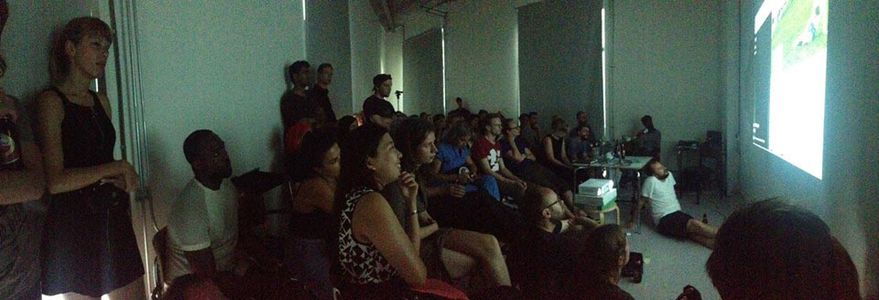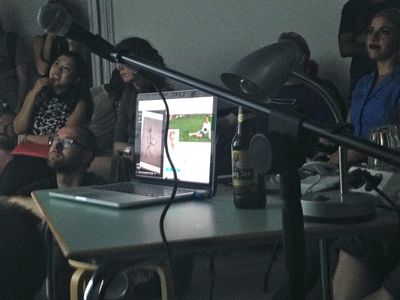Summer Talks: Gestural Interfacing: Difference between revisions
No edit summary |
No edit summary |
||
| Line 1: | Line 1: | ||
{{Events | |||
|Name=Summer Talks: Training and the problem of data: What would it take to adopt fugitive statistics | |||
|Location=De Punt, Frans de Wollantstraat 84, 1018 SC Amsterdam | |||
|Date=2015/08/07 | |||
|Time=20:00 | |||
|PeopleOrganisations=Jeremy Bailey | |||
|Type=Summer Academy | |||
|Web=Yes | |||
|Print=Yes | |||
}} | |||
Jeremy Bailey is a Toronto-based Famous New Media Artist whose work explores custom software in a performative context. | Jeremy Bailey is a Toronto-based Famous New Media Artist whose work explores custom software in a performative context. | ||
Since the early noughties Bailey has ploughed a compelling, and often hilarious, road through the various developments of digital communications technologies. Ostensibly a satire on, and parody of, the practices and language of "new media," the jocose surface of Bailey's work hides an incisive exploration of the critical intersection between video, computing, performance, and the body. The unique terrain of Bailey's work sits between a collision of the rarefied and the populist. | Since the early noughties Bailey has ploughed a compelling, and often hilarious, road through the various developments of digital communications technologies. Ostensibly a satire on, and parody of, the practices and language of "new media," the jocose surface of Bailey's work hides an incisive exploration of the critical intersection between video, computing, performance, and the body. The unique terrain of Bailey's work sits between a collision of the rarefied and the populist. | ||
Revision as of 16:20, 13 November 2015
Template:Events Jeremy Bailey is a Toronto-based Famous New Media Artist whose work explores custom software in a performative context. Since the early noughties Bailey has ploughed a compelling, and often hilarious, road through the various developments of digital communications technologies. Ostensibly a satire on, and parody of, the practices and language of "new media," the jocose surface of Bailey's work hides an incisive exploration of the critical intersection between video, computing, performance, and the body. The unique terrain of Bailey's work sits between a collision of the rarefied and the populist.

